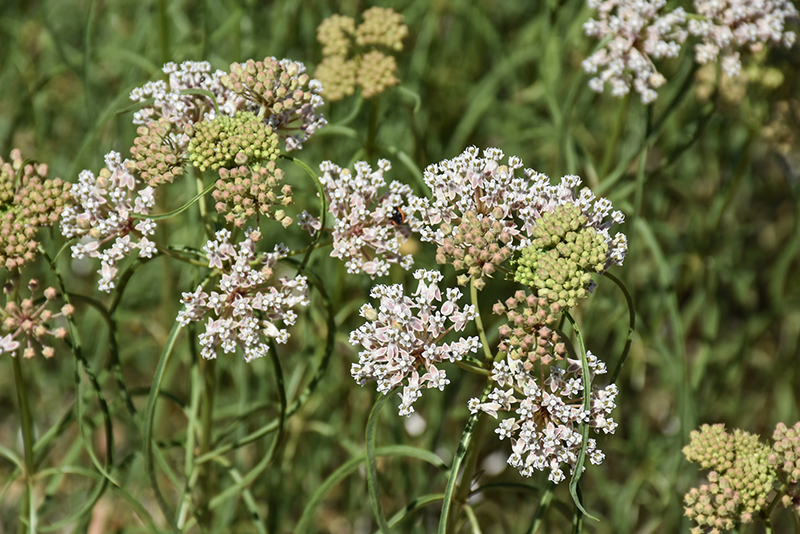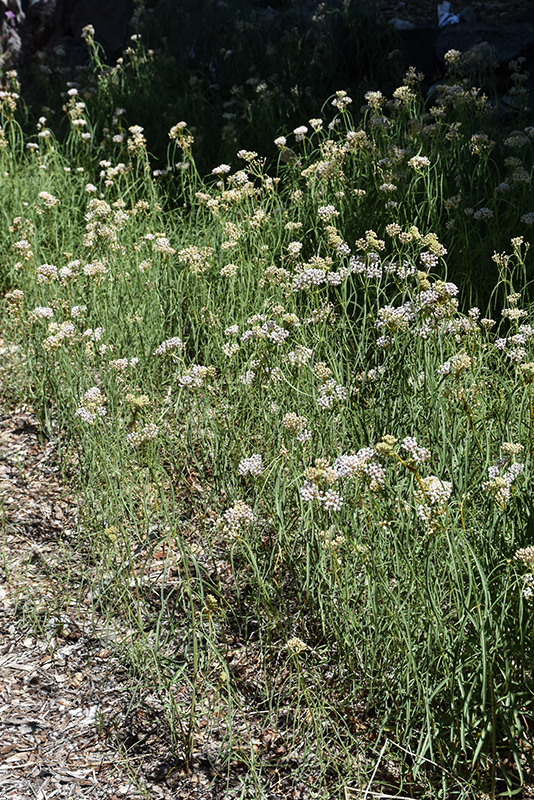Height: 30 inches
Spread: 24 inches
Sunlight:
![]()
![]()
Hardiness Zone: 4
Other Names: Horsetail Milkweed
Description:
A wonderful plant that attracts Monarch butterflies to the garden; an upright, unbranched perennial with narrow needle-like foliage in whorls along the stem; clusters of white flowers in summer followed by seed pods; drought tolerant once established
Ornamental Features
Whorled Milkweed features showy fragrant white flat-top flowers at the ends of the stems from early summer to early fall. The flowers are excellent for cutting. Its narrow leaves remain dark green in color throughout the season. The fruits are showy tan pods displayed from late summer to mid fall.
Landscape Attributes
Whorled Milkweed is an herbaceous perennial with an upright spreading habit of growth. Its relatively fine texture sets it apart from other garden plants with less refined foliage.
This is a relatively low maintenance plant, and is best cleaned up in early spring before it resumes active growth for the season. It is a good choice for attracting bees, butterflies and hummingbirds to your yard, but is not particularly attractive to deer who tend to leave it alone in favor of tastier treats. Gardeners should be aware of the following characteristic(s) that may warrant special consideration;
- Spreading
- Self-Seeding
Whorled Milkweed is recommended for the following landscape applications;
- Mass Planting
- General Garden Use
- Naturalizing And Woodland Gardens
Planting & Growing
Whorled Milkweed will grow to be about 24 inches tall at maturity, with a spread of 24 inches. It tends to be leggy, with a typical clearance of 1 foot from the ground, and should be underplanted with lower-growing perennials. It grows at a medium rate, and under ideal conditions can be expected to live for approximately 10 years. As an herbaceous perennial, this plant will usually die back to the crown each winter, and will regrow from the base each spring. Be careful not to disturb the crown in late winter when it may not be readily seen! This is a self-pollinating variety, so it doesn't require a second plant nearby to set fruit.
This plant does best in full sun to partial shade. It is very adaptable to both dry and moist locations, and should do just fine under typical garden conditions. It is considered to be drought-tolerant, and thus makes an ideal choice for a low-water garden or xeriscape application. This plant does not require much in the way of fertilizing once established. It is not particular as to soil type or pH. It is highly tolerant of urban pollution and will even thrive in inner city environments. This species is native to parts of North America, and parts of it are known to be toxic to humans and animals, so care should be exercised in planting it around children and pets..



